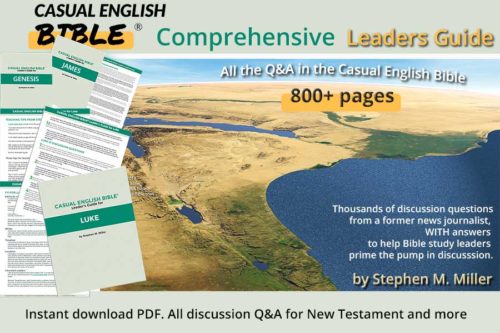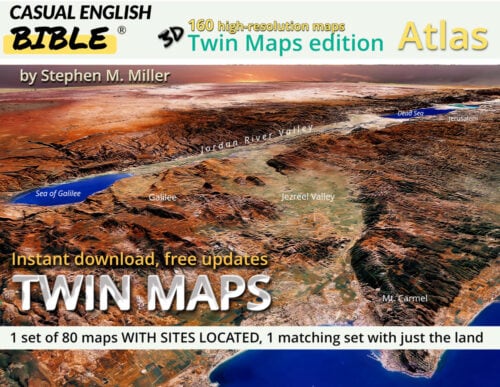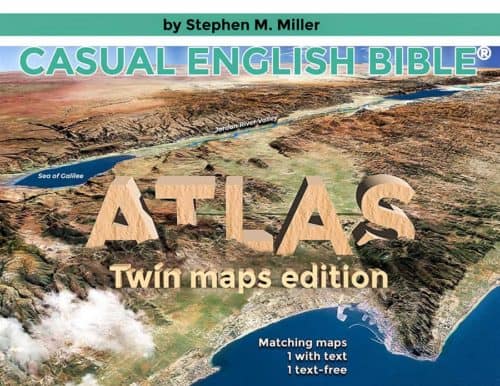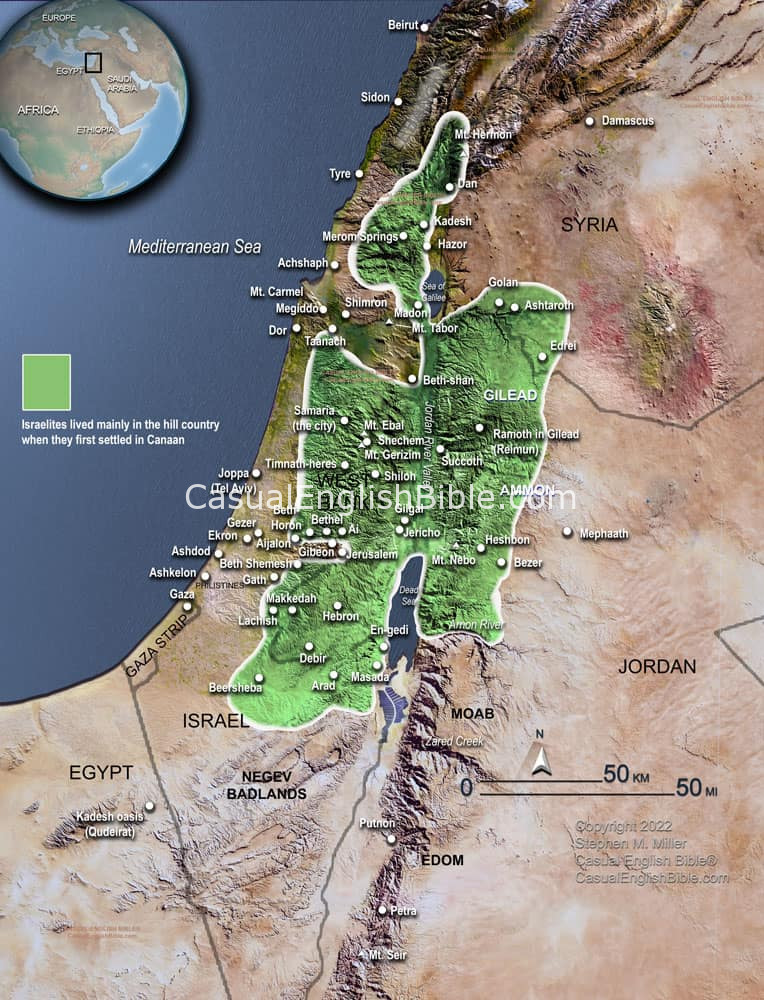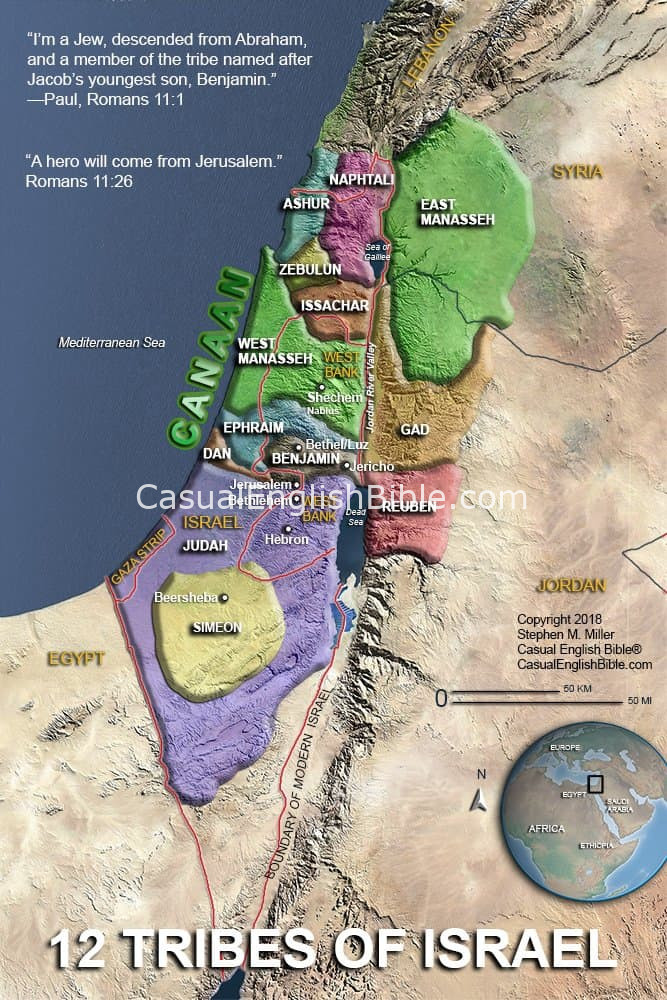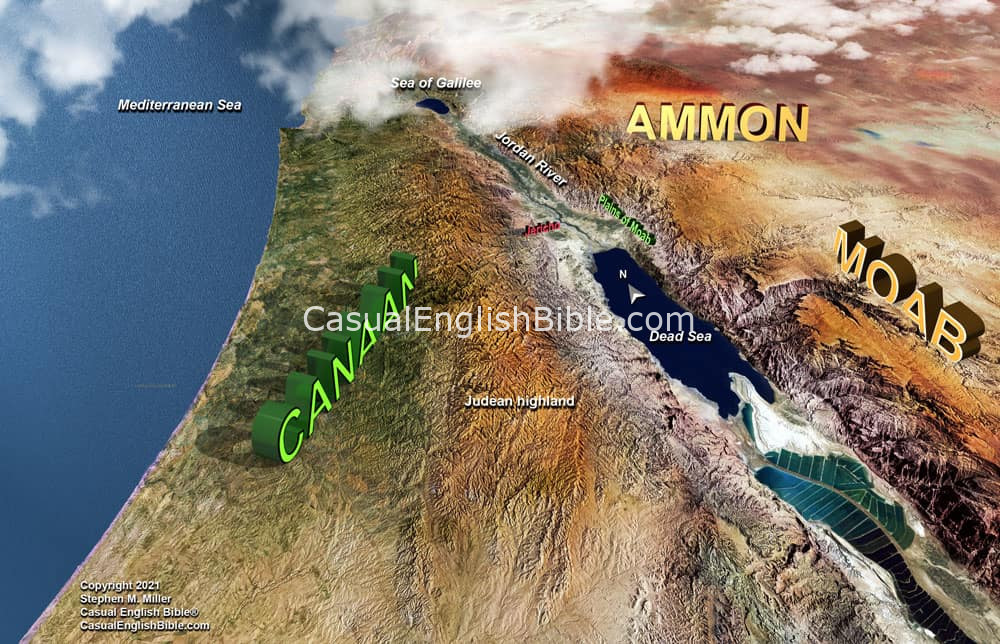Judges 10
Israel sins, suffers, and sings the blues
Tola took his turn
1After Abimelech, Tola, a man from the tribe of Issachar, rose to become Israel’s next leader. [1] Tola, son of Puah and grandson of Dodo, [2] lived in the hills of Ephraim. 2He led Israel for 23 years. He died and was buried at Shamir. [3]Jair took his turn
3After Tola, Jair of Gilead led Israel for 22 years. 4He had 30 sons who rode on 30 donkeys [4] and controlled 30 towns in Gilead. That part of the world became known as “Jair Towns.” [5] People still call it that today. 5Jair died and was buried in the town of Kamon. [6]Goodbye God, hello Baal
6People in Israel reverted to their bad habit of bad behavior. They went back to worshiping the local gods: various Baals [7] and Ashtaroths [8] along with the gods of Aram, [9] Sidon, Moab, Ammon, and gods of the Philistines. They left the LORD. They didn’t worship him at all anymore. 7So the LORD let them go and allowed the Philistines and people of Ammon to take control of Israel.8That same year, and for the next 18 years, Philistines and Ammonites made life miserable for all Israelites east of the Jordan River in the region of Gilead, where Ammonites lived. 9Ammonites also crossed the Jordan River and invaded the tribal territories of Benjamin and Ephraim near the center of Israel. This traumatized the Israelites. 10They took their pain to God and prayed, “We’re guilty, LORD. We left you, our own God. And we started worshiping Baals. We were wrong to treat you that way.”
God: No, I won’t save you
11The LORD answered, “I saved you from the Egyptians, Ammonites, and Philistines, didn’t I? 12And I saved you from the people from Sidon, Amalek, and Maon. Remember? You asked me to help, and I saved you from those people. 13Then you left me. And you worshiped other gods. I’m done. I’m not coming to your rescue anymore. 14Go cry to your new gods. Let them save you this time.”15The Israelites told the LORD, “We’re guilty of everything you said. Punish us in any way you think best. But whatever you do, save us today.” 16They took down their idols and didn’t worship them anymore. The LORD saw their misery and remorse. He couldn’t stand to watch them suffer anymore.
Hunting for a leader
17Armies of both sides prepared for battle. Ammonites assembled an army at Gilead. Israel’s gathered its army at Mizpah. [10] 18Israel’s commanders from Gilead said, “Who’s going to lead this attack on Ammon? Whoever volunteers will rule Gilead.”Footnotes
Tola “rose” to power, but there’s no mention of God.
Tola’s dad and grandfather aren’t mentioned anywhere else in the Bible.
Shamir’s location is unknown.
Donkey’s were a primo mode of transportation in Bible times, and one of the most expensive.
Numbers 32:41; Deuteronomy 3:14; Joshua 13:30.
Kamon may be linked to what is now the town of Qumeim, Jordan, roughly 15 miles (24 km) southeast of the Sea of Galilee.
The Hebrew word is plural, baalim. Some scholars say this refers to different forms of the main Canaanite god, Baal. He was a god of weather and fertility in family, flocks, and fields. People worshiped him using different styles of idols and by calling him various names: Hadad, Cloud Rider, Baal of [fill in whatever the local region was, such as Baal-zephon or Baal of Peor]. Peor was a mountain in Moab where people worshiped Baal. Baal of Peor was apparently a local representation of him. When women from Moab seduced some of the Israelite men to engage in either ritual sex or just plain ol’ illicit sex, it led the men into idolatry (Numbers 25).
Also known as Ashtarte, the Greek form of her name. Like Baal, she was a god of fertility. But she was also a go-to god for matters of love and war. Sometimes she’s described as Baal’s wife. Her figurines portray her as well-endowed, and then some—with her privates exposed and prominently displayed. She’s not the same god as Asherah (3:7), who shows up more often in Canaanite archaeological discoveries. Ashtaroth turns up in what are now Iraq and Iran—the land between the Tigris and Euphrates Rivers, known as Mesopotamia. There, she was usually known as Ishtar.
Aram covered much of what is now Syria, with parts of Turkey, Lebanon, and Iraq. Sidon is a city on Lebanon’s Mediterranean coast. Moab and Ammon were in Jordan.
Mizpah’s location is uncertain.
Discussion Questions
- Sorry, there are currently no questions for this chapter.





